As you can see, it's a typical Mabuchi FT16D (can drive). It even has a usable set of Mabuchi leads and both the can and the end bell are in OK shape. Hooking it up, it runs... and that's about all you can say about these things.
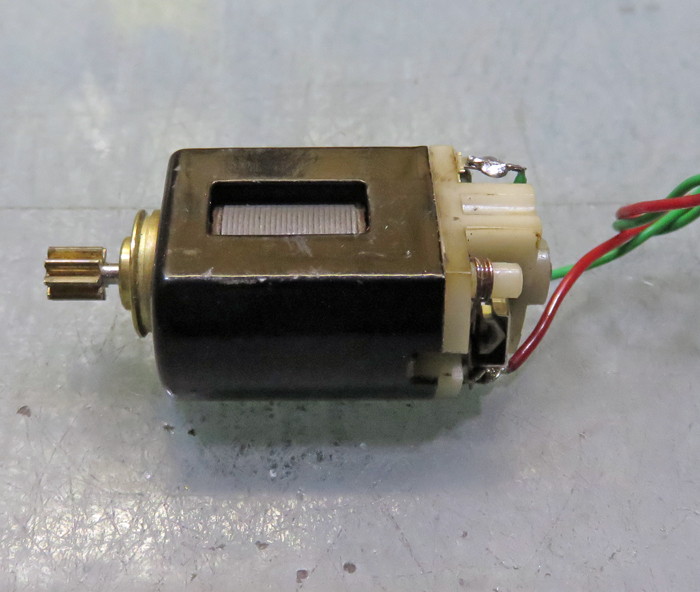
Taking the motor apart, you have your standard 110 turns of really skinny wire (#32?) and the Mabuchi stack and comm. I typically throw away the springs and brushes, and that'll be the case here as well. The brushes show some wear (although not too bad), but new ones are a good investment, and those stock springs are awful... barely supplying enough pressure on the small brushes to keep them in good contact with the comm on even the stock wind.

Stripping all the wire off the arm, you wind up with a pretty normal looking stack made up of .014" thick lams, insulated on both ends with fiber pieces, the junk Mabuchi comm that I almost always toss (unless someone REALLY needs things to be stock for some reason), and the Mabuchi steel tail spacer that is guaranteed to cause shorts if the magnet wire rubs against it... so that, the comm and the fiber stack-end insulators all get tossed. The shaft, while not pristine on the drive end, is surprisingly straight, so I'll keep that and polish it a bit to smooth out what's left of the splines.
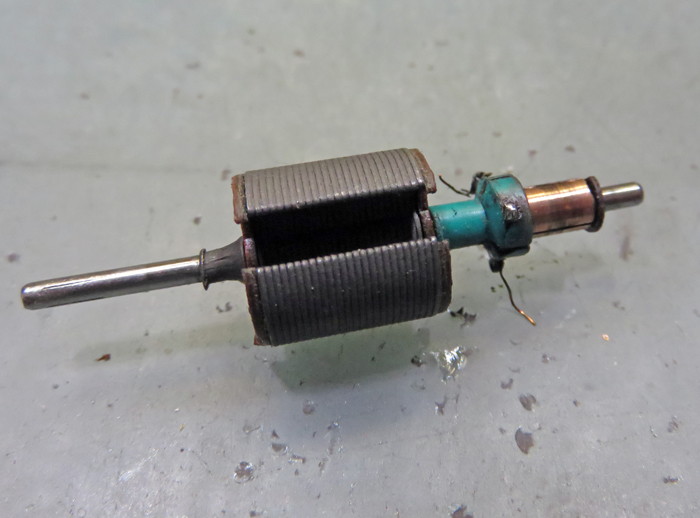
So first off, I swapped the stock comm for a replacement Tradeship one. The Tradeship has a phenolic "tail" that's kinda wide, and to make more room for winding, I shortened that and tapered off what was left of it. I then cut comm and tail spacers from brass tubing with approximately a 2mm ID. These are of a length to both center the arm in the field, and to make up for losing the fiber stack-end insulators (each of which is thicker than a lam). The new comm spacer and shortened com phenolic tail, will both help to make for a substantial increase in winding room.
This Tradeship com also has a built-in timing advance in the CW direction (ie: the tabs are NOT centered on the comm segments). Obviously, you can still advance the com timing in the standard CCW direction (using the comm slots instead of the tabs for spotting the timing), but that puts the tabs in an awkward position for winding, tieing, and finishing the arm. On this motor, I left everything and just went with the CW timing advance. Generally speaking, these motors will wind up going into a chassis with an "inline" motor configuration, so it's a simple matter of just installing the crown on the other side of the pinion gear.
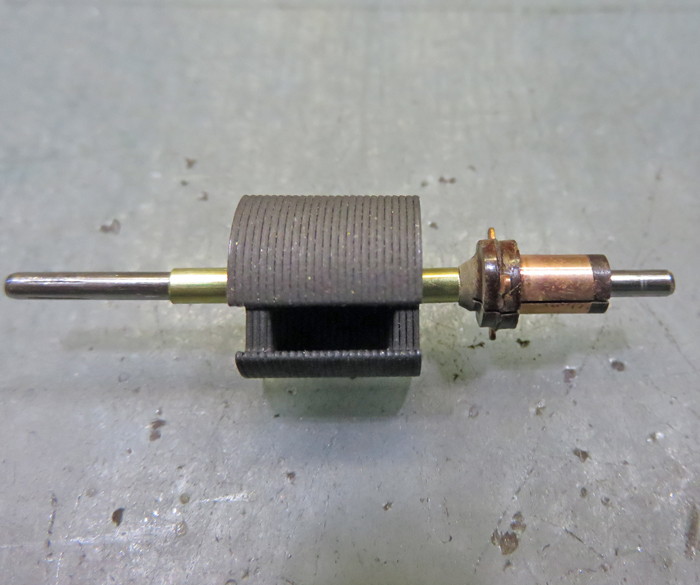
With all the attention having been paid to the arm, it was time to spruce up the can a bit. So I stripped the can down, polished up the bushing carrier, and got it ready for paint... also drilling and countersinking the can for endbell retaining screws.
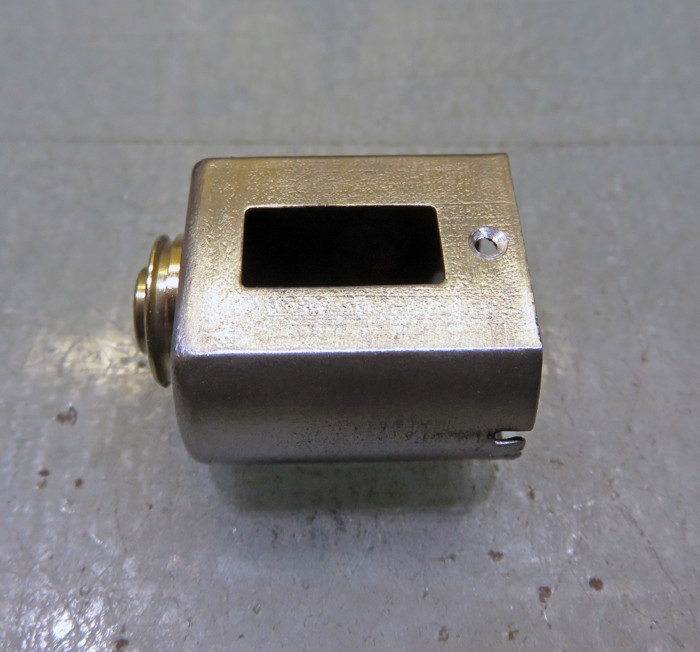
Meanwhile... the can got a fresh coat of orange paint, a very "Mabuchi" color instead of doing something more "different". Also, the arm went into the "powder coating department" (ie: the garage) and got a nice coat of 3M powder. I also polished up the shaft as best as I could without reducing the shaft diameter significantly; that'll be important when it's time to balance the arm.
We're ready to start actually making a motor!


For this motor, the arm got a 65t/30 wind done "backwards" and, while not especially pretty to look at, it WILL be a runner!

Time to mix up a batch of high-temp epoxy, tie the arm, and preheat the arm to make sure the epoxy penetrates the arm as completely as possible.
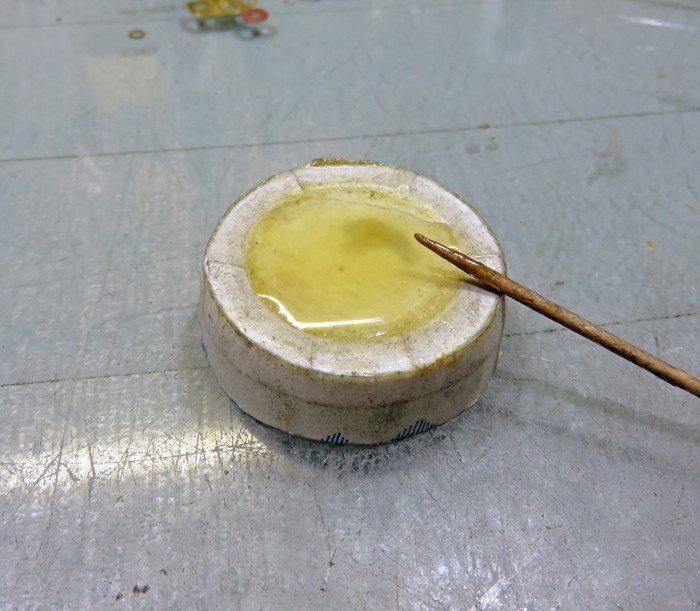
Starting the assembly of the finished motor, I made up a pair of .004" steel shims. While a total of .008" reduction in the "hole" doesn't sound like much, it's a good number for these motors. First off, it's not so much that the magnet tabs need to be flattened. Second, it is enough to make a significant difference in performance. Third, you really don't want such a tight setup in these old motors... unless you're going "all the way" and will be modifying the endbell against heat problems.
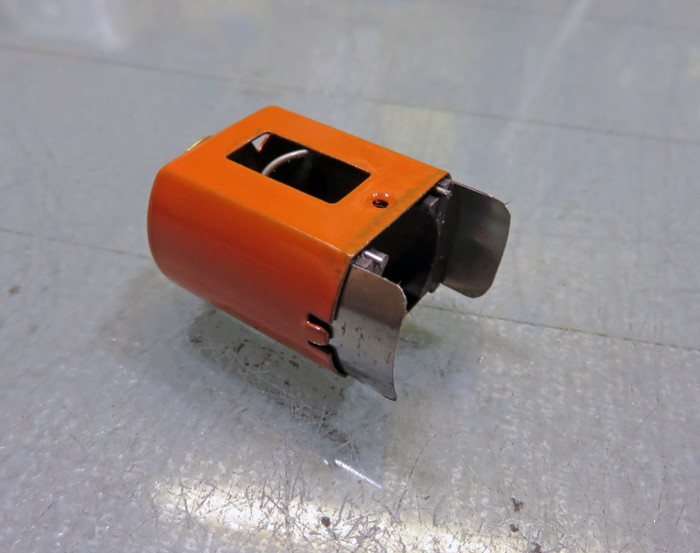

With the arm tied and epoxied... fresh out of the oven from speed-curing, we're getting closer to having an finished motor.
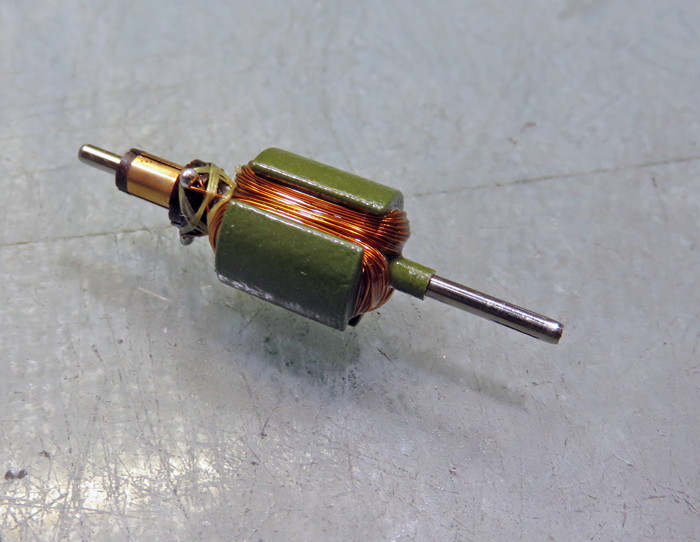
Next step is to remove the cured powder coating from the outside of the arm. While it doesn't cause any problems just "being there", it does add rotating mass to the arm and in a tight setup, it increases the OD of the arm to the point where it will hit the magnets... a real no-no. So, of course, this needs to be done before balancing, as well as cutting the comm, another important step to getting the motor to run best as possible and reduce "brush bounce".

... speaking of cutting the comm:
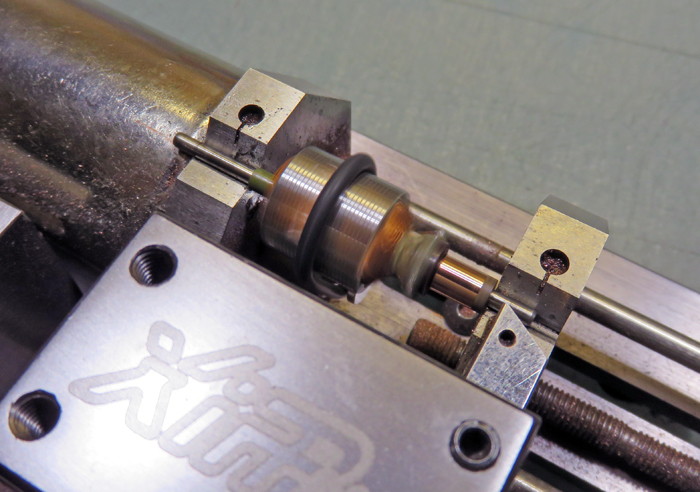
It's also a good idea to keep checking for problems along the way to avoid wasting time and effort on subsequent steps if a problem should arise. The last time I check is right before final assembly, and the arm meters "dead-bang on" at .615 ohms. This arm will be a big-time improvement over the stock arm, and the other improvements will make for a sweet runner.

In most cases, I'll do a static balance on mild winds. If the shaft is good, and you invest the time and effort, you CAN do a plenty good enough job for these kinds of motors. I wouldn't expect this to work well enough with hotter motors, but here... it's all good. The arm balanced up with no problem thanks to my R-Geo balancing block and a set of straightedge blades.
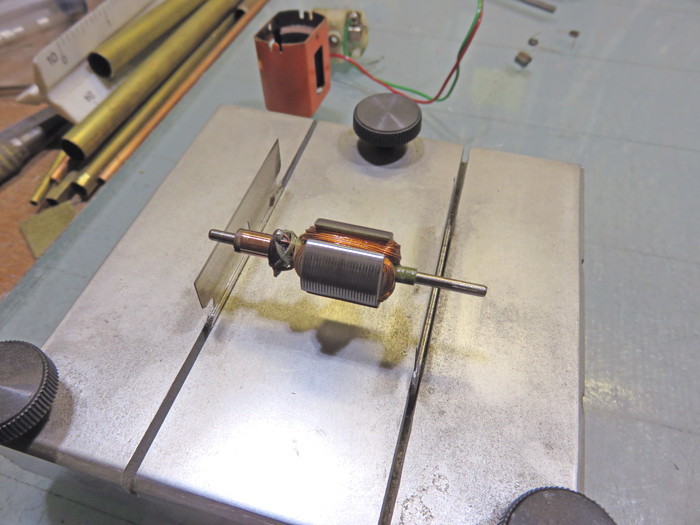
Of course, if you're proud of all the work you've done (and as you can see... it IS a lot of work!), it's time to "sign" your work. That way, years from now people will look at the arm and say... "What a jerk that Havlicek was for wasting all that time on such a goofy old motor!"

After carefully spacing the arm to be centered in the field (another really important step), and putting the motor together, I wound up a pair of new stainless steel springs from .015" wire. This one little tidbit will also result in a big improvement in performance... especially with the new wind. After that, a set of new brushes were installed making sure they don't hang up in the hoods (a motor-killer), both ends were oiled LIGHTLY and time to give her a spin on the power supply. Well, this motor is much faster than I would have even guessed and smooth as all get-out to boot. It draws just about an amp and doesn't at all get alarmingly warm. This old Mabuchi has a whole new lease on life, and one where it will run rings around its former self, but still be entirely appropriate for a period chassis/car. The endbell itself was fine... albeit a little grungy, but that adds "authenticity" or "patina", right?
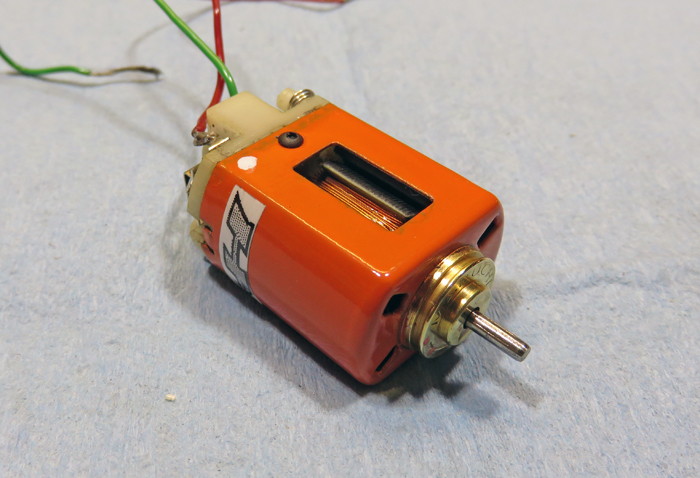
PS: Cheers to Joe Lupo for furnishing a clean motor to work on. Joe has 'the good stuff"!
-john





















